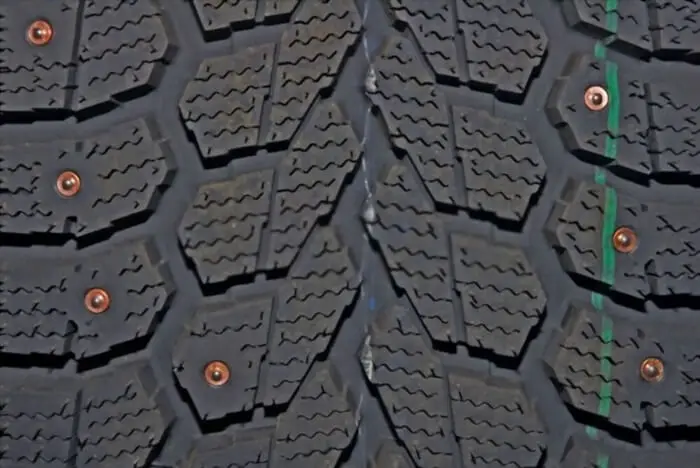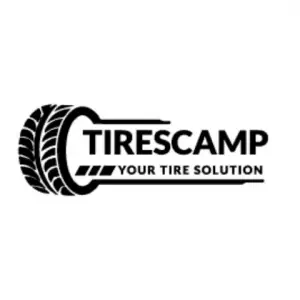If you’re in the market for tires or want to change tire sizes or types, you’ll probably notice some letters on the tire’s sidewall. An example of these letters is letters indicating the tire’s ply rating. Ply rating refers to the letters corresponding to the tire’s load range. Your tire’s load range and ply rating indicate how much weight it can support at its maximum air pressure.
When tires used to be made of plies or layers of cotton, the phrase tire ply referred to the layers of cotton in a particular tire, but currently, tire ply generally refers to the load range. Today’s tires are unique since there are a variety of techniques to strengthen a tire without adding more layers. As a result, a ply rating like the 4-ply, 6-ply, or 10-ply is typically used to refer to off-road or heavy load tires vs standard tires.
4 Ply vs 10 Ply: What’s the Difference?
The load range rating relates to the amount of load the tire can support at a specific psi. 4-ply tires are also known as B load range tires. The tires optimal air pressure is 240 kPa (35 PSI), and they are made for lightweight cars that are not used for towing or hauling.
In contrast, 10-ply tires are also known as E load range tires. These tires can accommodate an optimal air pressure of 80PSI. They are also known as Extra Load tires or Reinforced Tires since they are suitable for towing, hauling, and off-road utilization.
Overview of the 4-Ply
Compared to tires with greater ply ratings, such as 10-ply tires, 4-ply tires or B range tires are not as sturdy or durable. However, this isn’t necessarily bad since they are designed for a different task and are more comfy and pocket friendly compared to higher-ply rating tires.
Because these tires have reduced rolling resistance, they help to improve fuel efficiency. Also, they’re made of soft compounds that help improve traction and reduce noise on the road, particularly in warm and dry conditions. Additionally, since they are substantially lighter, they offer an enhanced drive quality and reduced braking distance.
Because they are better suited for the function, many passenger vehicles nowadays come with 4-ply tires. A set of these tires is what you need if you mainly use your vehicle in town and never venture off-road.
Merits
- They are affordable
- They offer a comfortable ride
- Improved grip levels
- Enhanced fuel economy
- Less noisy on the road
- Enhanced overall performance
Demerits
- Not the most robust tires
- Not the most durable tires

Overview of 10-Ply
10-ply tires are much thicker compared to 4-ply; hence they should last much longer when utilized for towing, hauling, or off-roading. When used for hauling and towing, these tires thrive because they can better load control without wobbling at high speeds. They are constructed to provide more stability to your truck than tires with a lower ply rating.
Large-duty trailers and trucks that frequently move heavy commodities employ these tires. Additionally, since these tires are highly robust and durable, they’re also excellent for off-roading, particularly rock climbing.
Compared to tires with a lower ply rating, these are unlikely to puncture. They also have higher sidewall protection, meaning they have the ability to endure more stress encountered in daily urban situations like riding over aggressive potholes or hitting a curb.
These tires are additionally suitable for vehicles that spend most of their time on construction sites, as the increased durability and strength they provide are ideal for such conditions.
Merits
- Are biffer compared to low ply tires
- Provide improved off-road performance
- Offer improved towing performance
- Suitable for moving heavy loads
- Unlikely to puncture
- Dependable at construction areas
Demerits
- Heavy
- Expensive
4-Ply vs 10-Ply: Which One is Better?
A 4-ply is the best option for a standard passenger automobile mainly driven on the road and rarely goes off-road. These tires provide reduced on-road noise, enhanced grip, improved fuel efficiency, and are less expensive.
A 10-ply, in contrast, is a tire for the working man. If you’re not planning to utilize your car for off-roading, towing, or hauling, getting this tire is not required. A 10-ply tire is thicker, more expensive, and usuited for everyday usage.
How to Find Out Your Tire Ply Rating (VIDEO)
Frequently Asked Questions (FAQ)
How Does Ply-Rating Correspond to Load Range?
In essence, load range rating superseded ply range rating, thanks to recent technological advancements. This is how a specific ply rating corresponds to a specific load range:
| Load Range Rating | Ply Range Rating |
| B | 4-ply Tire |
| C | 6-ply Tire |
| D | 8-ply Tire |
| E | 10-ply Tire |
| F | 12-ply tire |
Are 4-Ply Tires Good for Off-Road Use?
4-ply tires are standard tires. These tires provide higher fuel economy, reduced road noise, lower rolling resistance, and good grip on the highway. However, these tires are not ideal for off-road use, and if you do use them off-road, you will undoubtedly encounter many problems.
Do 10 Ply Ride Rougher?
Though 10-ply tires will help support a high load capacity, you are likely to experience a rough ride and less gas mileage with these tires.
Does Tire Ply Affect Ride Quality
Yes. A tire ply can significantly affect your ride quality. Additionally, it also has some effects on the fuel economy.
Do 10-Ply Handle Better?
10-ply tires are pretty heavy, but their sidewalls are stiffer and handle better.
What Load Rating is 10-ply?
The load rating of a 10-ply tire is E.
Can You Use Car Tires on Truck?
Car tires can not be used on truck. This is because they are made of a highly flexible sidewall. The high flexibility of the sidewall makes them not suitable for use on trucks
Will a Tire With Higher Ply Rating Last Longer?
The ply rating does not always indicate how long a tire will last. The rate at which a tire’s tread wears and whether or not its tread wears uniformly is usually what defines its durability.
Conclusion
We hope post helped you understand the differences between the 4-ply and 10-ply tires. However, picking the best tire is a matter of personal preferences and tastes.
